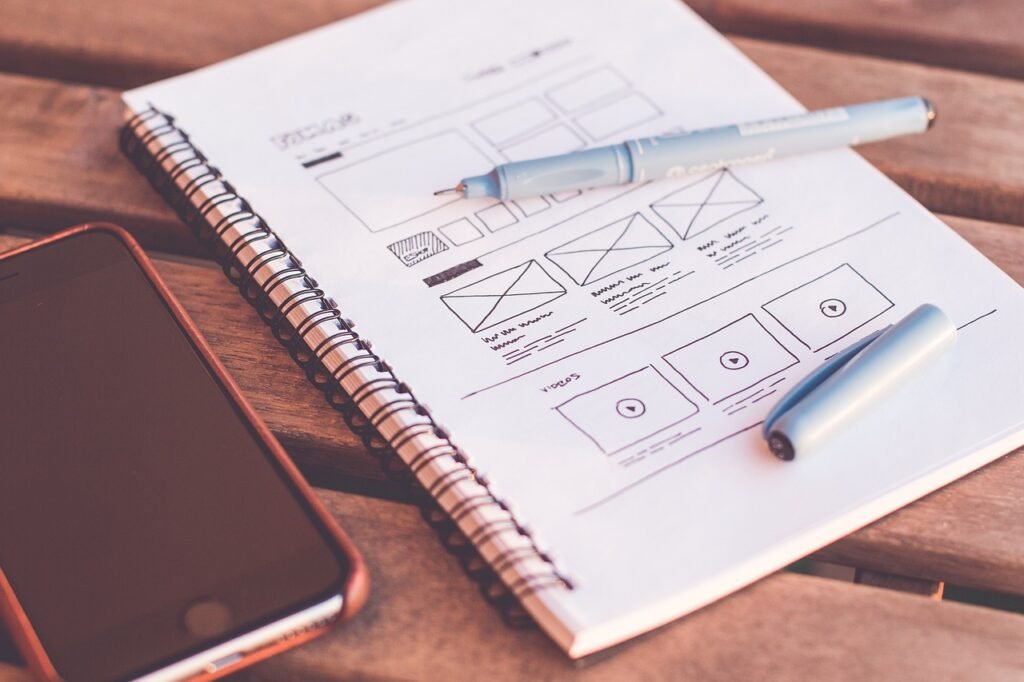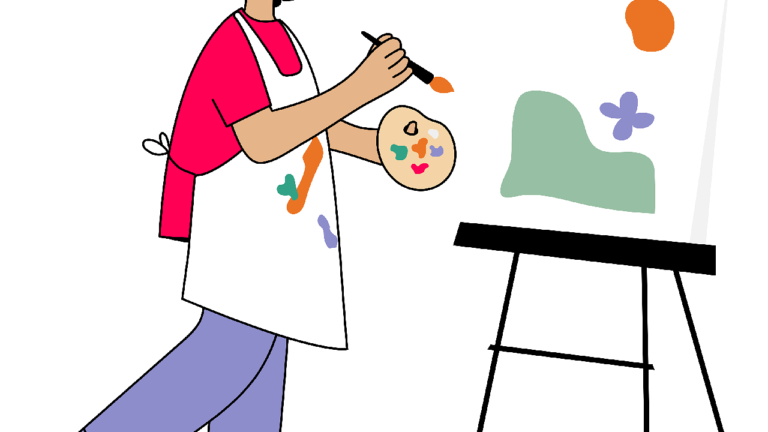
25 Essential Design Terms Every Designer Should Know
Venturing forth as an enthusiastic initiate in the field of graphic arts entails learning new languages for most people. However, even the most seasoned of designers still struggle with the terminologies. Be it brochures and booklets in InDesign, photos in Photoshop, or logos in Illustrator-we cannot overemphasize the significance of these fundamental terms.

How much do you know about design terminology before we start? Go ahead and find out how much more you know about them before we plunge ourselves into design lingo.
- Artboard
An artboard is utilized in Adobe Illustrator as a working area; it is essentially home to all your various design elements, allowing you to create numerous artboards within one single document to organize your different pieces of artwork. Just print or save them separately. Though Illustrator uses Artboards, Photoshop too has something similar to Artboards coined “Canvas.” - Composition
Composition then has been found in graphic design where everything organizes in a sequence. It is about the way elements come together on a page or a screen. There is a definite organization within it and it is not any arbitrary layout as it follows certain rules and principles, for example, balance, contrast, and alignment, so that it can guide the eyes of those looking at it and communicate about what you want to say. - Horrible Registration
Bad registration is when the separate printing colors (cyan, magenta, yellow, black) do not lie down correctly and you end up having blurry or off-centered colors on the final print. This really irritates, but can nearly always be avoided by ensuring the file is properly prepared and that the printer is calibrated. - Bleed
Bleed exists on all sides of your printed piece, which may overflow beyond the trim area and ensures that your design when trimmed will reach the edge without any white borders around it. Usually, bleeds are set at around 3mm or 1/8 inch. - Body Copy
It is actually the main content or text in a publication whether it be on a magazine, website, or advertisement. It is the main content of your design in text form, that opposed to headlines, captions or other smaller text elements. - Canvas
The canvas- In Photoshop, your canvas is the workspace within which all the editing happens. More or less, it is the “blank page,” where you can adjust the size to allow more elements or crop out that unwanted area in your design. - Color
Color has a very important role within graphic design as understanding color theory is extremely important for creating a satisfaction designing in any sense. There are different emotions evoked even by different colors and they affect how the viewer perceives the message sent in your designs. This color wheel and techniques associated with its use are employed by many designers throughout the ages to give them the interwoven blessings of complementary, triadic, and analogous colors. - CMYK
CMYK stands for Cyan, Magenta, Yellow, and Key (Black) where each of these four inks is layered in different proportions to produce a range of colors. CMYK is necessary for work that results in printing. - Creep / Shingling
When a multi-page publication such as a book or magazine is printed, the creep occurs at the middle position of the book where it was bound. It forces uneven margin distribution: the presence of creep usually means adjustment during the design process, to ensure at least everything is aligned. - Entry Point
All creative work has an entry point, the spot to which the viewer’s eye travels first. This could be the headline, a striking image, or even something in the design construct leading the eye into the content. Make the logical path of the viewer’s eye follow. - Principles Gestalt
These are principles that explain how human beings interpret an image as a whole. In design, Gestalt principles help to organize elements of the creation of intimate and convincing form in design. For example, the principle of proximity involves the nearness between two elements, and their likeness can make them seem to be related together, even when their relation is not explicit. - Introduction / Stand-First / Deck
This is a brief introduction or summary of an article or blog post at the beginning. It is located between the headline and main body copy to give a glance of that which the content would be about. - Kerning
Kerning is the spacing between letters in a word individually. Kerning helps balance design in the text, making for an elegant appearance and readibly understandable letters connections devoid of gaps or clashing letters making text flow awkward. - Layout
The layout that is given a graphic designer in sketch form is the blueprint of design-where text, image, and even shape come together in a plan to ensure that a visual flow of balance is created. A firm layout is an assurance that an aesthetically beautiful design is made and that it is navigated absolutely with ease. - Line Spacing
The line spacing actually means more distinction that prevails between lines of text, as the leading normally means the space from top to bottom. Thus, an appropriate line spacing normally means conditioning just enough design that helps in improving readability. It allows a balanced flow of content. Can feel really cramped with very little and disjointed with too much. - Masking in Photoshop and Illustrator
Masking is a very cool technique used in Photoshop and Illustrator wherein you can hide or reveal definite parts of an image without any permanent changes occurring. The technique also proved to be very useful when creating complex layouts or editing an image without destroying even an iota of detail. - Mock-Up
Simply characterized as a model or prototype that holds your design, a mock-up is a demonstration of how the final product appears in the real world, such as in a website, a product packaging, or some poster. Static or interactive, mock-ups are a good way of presenting designs to clients or for your project portfolio. - Negative Space
Spaces within the content or subject that pertain to the empty areas around the design elements: This is what is termed as negative space or white space. In effect, on the contrary, it is as vital as the contents themselves because it minimizes visual clutter, give emphasis, and at the same time gives an aesthetic value to design.
19: Rule of Thirds
You partition your design layout into 3×3 grids through rule of thirds; you attain a composed image by adjusting important subjects within those lines or at their intersections. The simplification will also guide the viewer’s eye along the most important detail.
River
A river is an unwanted visual gap of light in a block of text — basically caused by interword spacing. It becomes very unpleasant and disturbing and should be avoided by reconfiguring the texts.
Serif
The serif – a tiny horizontal line or stroke extending from a letter that runs across. Fonts with serifs, like Times New Roman, are believed by many to be more exceptional, while fonts without these lines – sans serifs – are generally viewed as being more modern and streamlined.
Stock photo
Quite often, stock photos are high quality pictures that you purchase for your own design projects. A number of times, you will find that the photos are offered royalty free- allowing you to use them without any doubts in commercial contexts. - Burstiness Ratio
Spot color is an ink-colored bricks applied in one single pass versus the four-color CMYK process. This is used for cases where there’s a specific color that isn’t otherwise achieved by CMYK printing. - User Flow
Steps through which an individual walks or travels as defined by an app or website are known as a user flow. Understanding the user flow helps the designer to plan projects with simple yet intuitive step-by-step processes that guide the user toward their goal, free from confusion. - size
The letter size has also been known as the height of the x-height. Lowercase letters are smaller in x-height. It is important to understand the concept in typographic terms, as it is a huge factor in text readability and visual quality in general.
When you start learning design jargon, it is only the start of the work. More knowledge about design vocabulary will expose you to know how it all correlates with the whole successful project. Such terms are helpful for a beginner as well as an expert; it will definitely enrich one’s form of communication and portfolio of design works.



